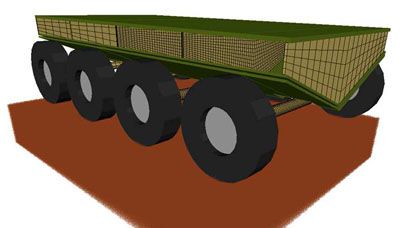
 Modelisation of blast loading on a steel structure using advanced numerical particle method
Modelisation of blast loading on a steel structure using advanced numerical particle method
Jean Luc Lacome
Impetus Afea – FRANCE
Curriculum
Jean Luc LACOME graduated from the University of Toulouse in 1998. His background is applied mathematics and especially numerical particle methods. After his PhD, he has been working for 10 years for LSTC where he implemented the SPH method in LS-DYNA. In 2007, he started the company IMPETUS Afea in France together with Arve Hanssen in Norway and Lars Olovsson in Sweden (developer of the ALE in LS-DYNA). The goal of IMPETUS Afea is to develop a new generation of software for engineers to simulation high transient dynamic problems. The goal is provide an accurate numerical simulation tool for engineers in an industrial environment.
Abstract
We study the structural response of a stainless steel plate submitted to a combination of explosives blast and sand. We present a fully coupled approach in which a discrete particle method is used to compute the load due to the products of detonation of the explosive shocks both in air and sand. We
also use an advanced finite element method to predict the deformations of the plate. The particle method is based on discrete particles interacting via rigid collision forces. This method relies on a Lagrangian formulation and has many advantages over classical ALE approach.
The method was validated with experimental tests. The experiments were performed in different cases: explosive only, explosive contained in dry sand and explosive in saturated sand. The particle method developed is capable of describing the physical interactions between the explosives and soil particles leading to a realistic speed ejecta from sand. Good quantitative agreement is obtained between measured and predicted deformations of the different plates.

